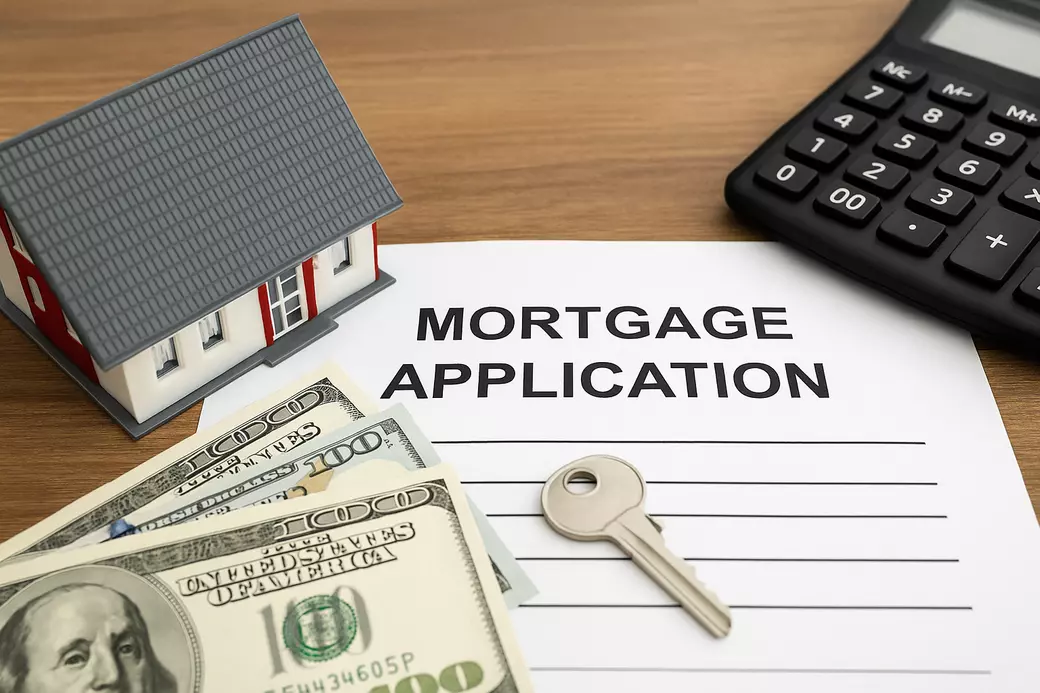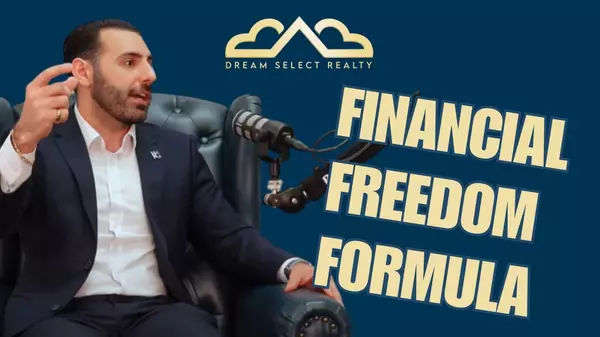2025 Suffolk County Mortgage Rates & Tips for Buyers

As of mid-April 2025, 30-year fixed mortgage rates in Suffolk County hovered around 7.22 percent, while 15-year fixed rates were close to 6.47 percent. With the county’s median sold price near $675,000, even a quarter-point change in rates can alter monthly payments by several hundred dollars. Understanding current rate trends, down-payment assistance programs, and how to choose between conforming, jumbo, FHA, and VA loans is essential for Suffolk buyers. This comprehensive guide covers the latest mortgage landscape, including assistance options like the Homeowner Assistance Fund (HAF) and Suffolk County Homeownership Assistance Program (SCHAP), plus expert tips on lender selection, rate locks, and creative financing strategies.
1. Current Mortgage Rate Environment
- Federal Reserve Policy and Economic Context
In early 2025, the Federal Reserve held the federal funds rate at 5.25 percent to curb inflation. As a result, long-term mortgage yields remained elevated, pushing most 30-year fixed rates above 7 percent. Buyer uncertainty increased, with many opting to act when rates dipped momentarily. - Average 30-Year & 15-Year Rates (April 2025)
- 30-year fixed rates averaged 7.22 percent, up from 6.75 percent at the start of the year.
- 15-year fixed rates averaged 6.47 percent, compared to around 6.10 percent a few months prior.
These levels meant that locking early could save thousands over the life of a loan. - Jumbo Loan Dynamics
In Suffolk, conforming loan limits for single-family homes cap at $726,525. Loans exceeding this threshold classify as jumbo, which typically carry a 0.25–0.50 percent rate premium. For example, a $900,000 jumbo might fetch 7.50–7.75 percent, and requires a 20–25 percent down payment to meet stricter underwriting. - VA & FHA Rate Differences
- VA loans averaged roughly 6.95 percent for a 30-year term, offering no private mortgage insurance (PMI) but charging a 2.15 percent funding fee (for first-time use).
- FHA loans averaged about 7.10 percent, requiring 3.5 percent down and carrying a 0.85 percent annual mortgage insurance premium (MIP) for borrowers with credit scores above 580.
These government-backed options often benefit buyers with lower down payments or moderate credit. - Key Takeaway:
Monitoring rate movements and understanding loan categories is critical. Locking when rates dip below 7 percent can yield significant long-term savings. Familiarize yourself with conforming versus jumbo and VA/FHA terms to select the optimal loan product.
2. Down-Payment Assistance & First-Time Buyer Programs
- New York Homeowner Assistance Fund (HAF)
HAF provides up to $7,500 in down-payment assistance for eligible low- to moderate-income Suffolk County buyers (income at or below 80 percent of Area Median Income). Recipients must complete a certified homebuyer education course. In early 2025, roughly 45 percent of HAF participants closed within 60 days, accelerating their path to homeownership. - Suffolk County Homeownership Assistance Program (SCHAP)
SCHAP offers up to $10,000 in forgivable down-payment assistance, pro-rated over ten years as long as the home remains the primary residence. For a family of four, the income cap is $120,000. In 2024, over two-thirds of SCHAP funds went to buyers in eastern Suffolk (e.g., Riverhead, Patchogue), reflecting where demand for assistance was highest. - FHA Lender-Paid Mortgage Insurance (LPMI)
Some Suffolk lenders offer LPMI, tacking an extra 0.25 percent onto the interest rate to eliminate annual MIP. For buyers with credit scores above 680, this can lower overall monthly payments by $100 or more, despite a slightly higher interest rate. - HomeReady & Home Possible Programs
- HomeReady (Fannie Mae): Requires as little as 3 percent down, allows gift funds, and caps borrower income at 115 percent of AMI (approximately $142,000 for a family of four in Suffolk).
- Home Possible (Freddie Mac): Also offers 3 percent down options with reduced mortgage insurance premiums (around 0.5 percent monthly) if LTV is 80 percent or below.
These products help creditworthy buyers with minimal down payments and favorable insurance costs. - Key Takeaway:
Investigate state and county assistance programs alongside lender-sponsored options. Combining down-payment grants with low-down-payment mortgages can drastically reduce out-of-pocket expenses and improve affordability.
3. Choosing the Right Lender & Lock Strategies
- Local Credit Unions vs. Regional Banks vs. National Lenders
- Local Credit Unions (e.g., Suffolk County FCU, Dime Community Bank) often quote slightly lower rates—around 7.00 percent for 30-year fixed—and provide personalized service. However, membership criteria apply.
- Regional Banks (M&T Bank, Capital One) offer competitive rates near 7.10 percent and a broader array of loan products, but underwriting timelines often run 45–60 days.
- National & Online Lenders (Rocket Mortgage, Better.com) advertise streamlined digital processes and sub-7 percent rates, yet origination fees (around 1 percent) can erode savings for larger loans.
- Lock vs. Float: Timing Your Decision
With rates hovering above 7.22 percent and forecasts hinting at further Fed rate hikes mid-2025, locking as soon as you go under contract is generally recommended. A quarter-point increase can add $50–$75 in monthly payments on a $400,000 loan. If you anticipate rates dropping, consider a float-down option (costing 0.125 percent of loan) that allows a one-time rate adjustment if rates decrease by at least 0.375 percent before closing. - Credit Score & Debt-to-Income Optimization
Improving your FICO from 700 to 740 can reduce rates by 0.25–0.50 percent. Suffolk buyers should order free credit reports, dispute any errors, and work with non-profit credit counselors to elevate scores before applying. Aim for a back-end DTI under 43 percent; many local lenders accept DTIs near 36 percent even when rates are high. - Mortgage Points & Rate Buy-Downs
Each discount point (1 percent of loan amount) typically reduces the interest rate by 0.25 percent. For a $300,000 loan, spending $3,000 (one point) to lower 7.22 percent to 6.97 percent saves roughly $30 monthly, recouping costs in about eight years. Borrowers should run break-even analyses with their lenders to determine if buying points makes sense given their anticipated length of stay.
Key Takeaway:
Selecting a lender involves balancing rate competitiveness, fees, and processing speed. Optimize credit profiles, explore float-down provisions, and evaluate point buy-downs to secure the most favorable long-term financing.
4. Creative Financing & Alternative Strategies
- Seller Financing
In some Suffolk neighborhoods—especially 1–4 unit multifamily properties under $350,000—sellers with substantial equity may offer financing at rates between 5.75 and 6.50 percent, undercutting market rates by 50–75 basis points. Typical terms run three to five years with a balloon payment due afterward, requiring careful due diligence on property condition. - Lease-Option & Rent-to-Own
Lease-option agreements let buyers lock in a purchase price (often 5–7 percent above market) with a non-refundable option fee of 2–3 percent. Monthly rent premiums (5–10 percent above market rent) accrue as credit toward the future down payment. In spring 2025, rent-to-own inquiries in Suffolk rose by 12 percent year-over-year, driven by tighter underwriting standards. - Contract for Deed & Wraparound Mortgages
For buyers unable to secure conventional financing, a contract for deed (land contract) allows them to make monthly payments to the seller while gaining equitable title. Wraparound mortgages enable a seller to keep their existing lower-rate mortgage while providing financing to the buyer at a slightly higher rate. These arrangements require careful legal review to ensure compliance and protect all parties.
Key Takeaway:
Alternative financing can bridge gaps for buyers with less-than-perfect credit or limited down payments. Work closely with a knowledgeable agent to structure and vet these arrangements properly.
5. Working with Dream Select Realty
- Pre-Approval Coordination:
Our mortgage partners deliver multiple pre-approval scenarios—conforming, FHA, jumbo—within 48 hours, at no cost to qualified buyers. This helps you understand your budget and negotiate confidently. - Rate Watch & Lock Assistance:
We monitor daily rate movements and critical Fed announcements, advising on the ideal lock-in window to protect you from sudden spikes. - Local Lender Network:
Through Dream Select Realty, you’re connected to a vetted network of lenders deeply familiar with Suffolk’s assistance programs—HAF, SCHAP, HomeReady—ensuring you maximize available incentives. - Post-Closing Support:
Even after you close, we provide ongoing refinance analysis, monthly market updates, and community resource recommendations to help you build equity and plan for the future.
Key Takeaway:
Choosing the right mortgage is as important as selecting the right home. Partner with Dream Select Realty to navigate Suffolk’s financing landscape and secure the best possible terms.
Ready to explore your mortgage options and secure financing for your Suffolk County home? Contact Dream Select Realty at (631) 623-7117 or visit dreamselectrealty.com to start your pre-approval process, learn about down-payment assistance, and connect with top local lenders.
Recent Posts











